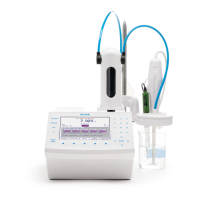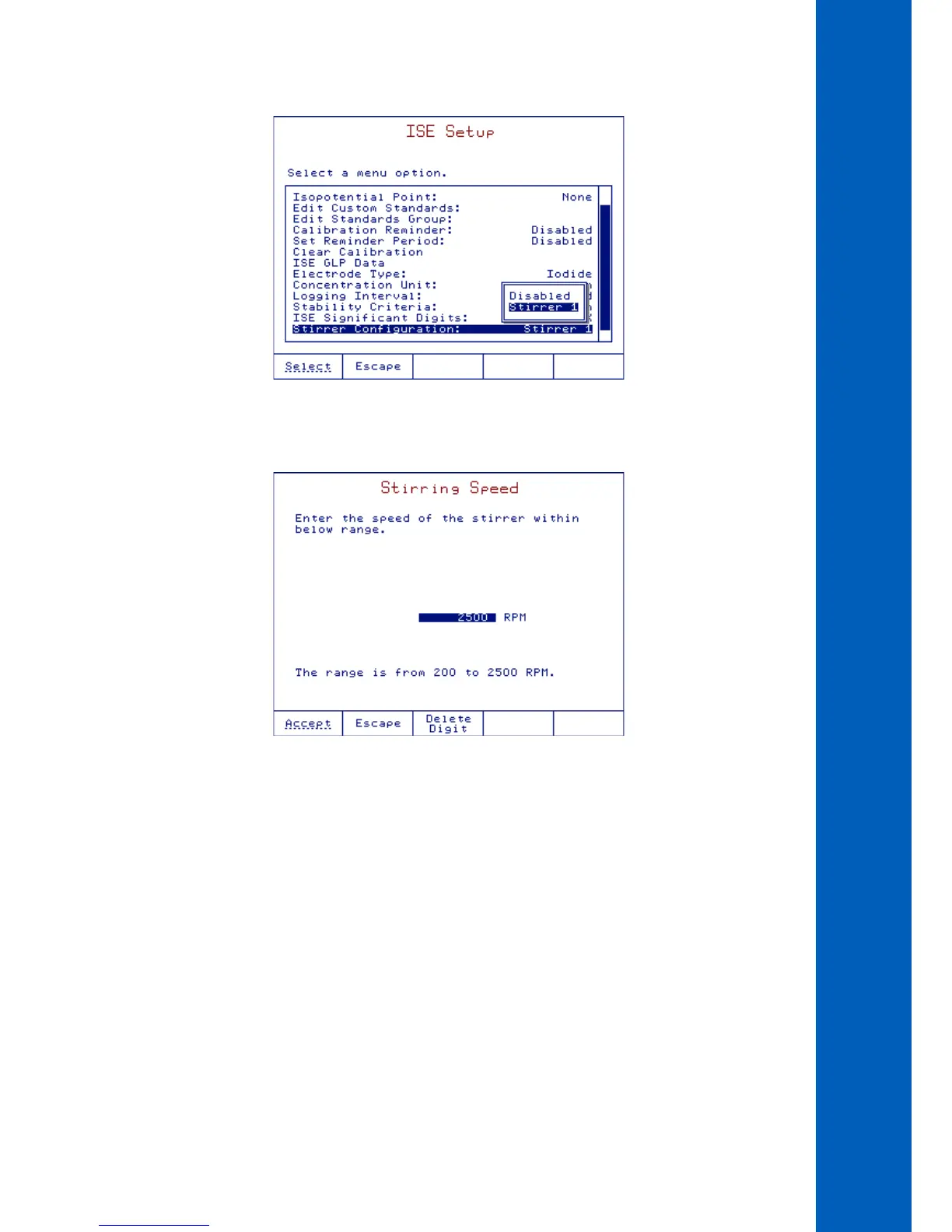9.2.15. STIRRER CONFIGURATION
Option: Stirrer 1 or Disabled
9.2.16. STIRRING SPEED
Option: 200 to 2500 RPM
9.3. ISE CALIBRATION
It is recommended to calibrate the instruments frequently if high accuracy is required. The instrument should also be recalibrated
whenever the “Calibrate Electrode” message appears on the LCD.
Due to electrode conditioning time, the electrode must be immersed for several seconds to stabilize. The user will be guided step by
step during calibration with easy-to-follow messages on the display. This will make the calibration a simple and error-free procedure.
PREPARATION:
Pour small quantities of the standard solution into clean beakers. If possible, use plastic beakers to minimize any EMC interferences.
For accurate calibration and to minimize cross-contamination, use two beakers for each standard solution: one for rinsing the
electrode and one for calibration.
Note: For accurate measurements, add the appropriate ISA (Ionic Strength Adjustment) to the calibration standards.
CALIBRATION PROCEDURE:
Before calibrating, make sure that the electrode type and concentration unit has been selected in ISE Setup.
Up to a five points calibration is possible using any combination of five standard solutions and five custom solutions.
The ISE calibration and measurement can be performed with or without temperature compensation. If the temperature compensation
option is enabled, the isopotential point of the electrode must be set in ISE Setup.

